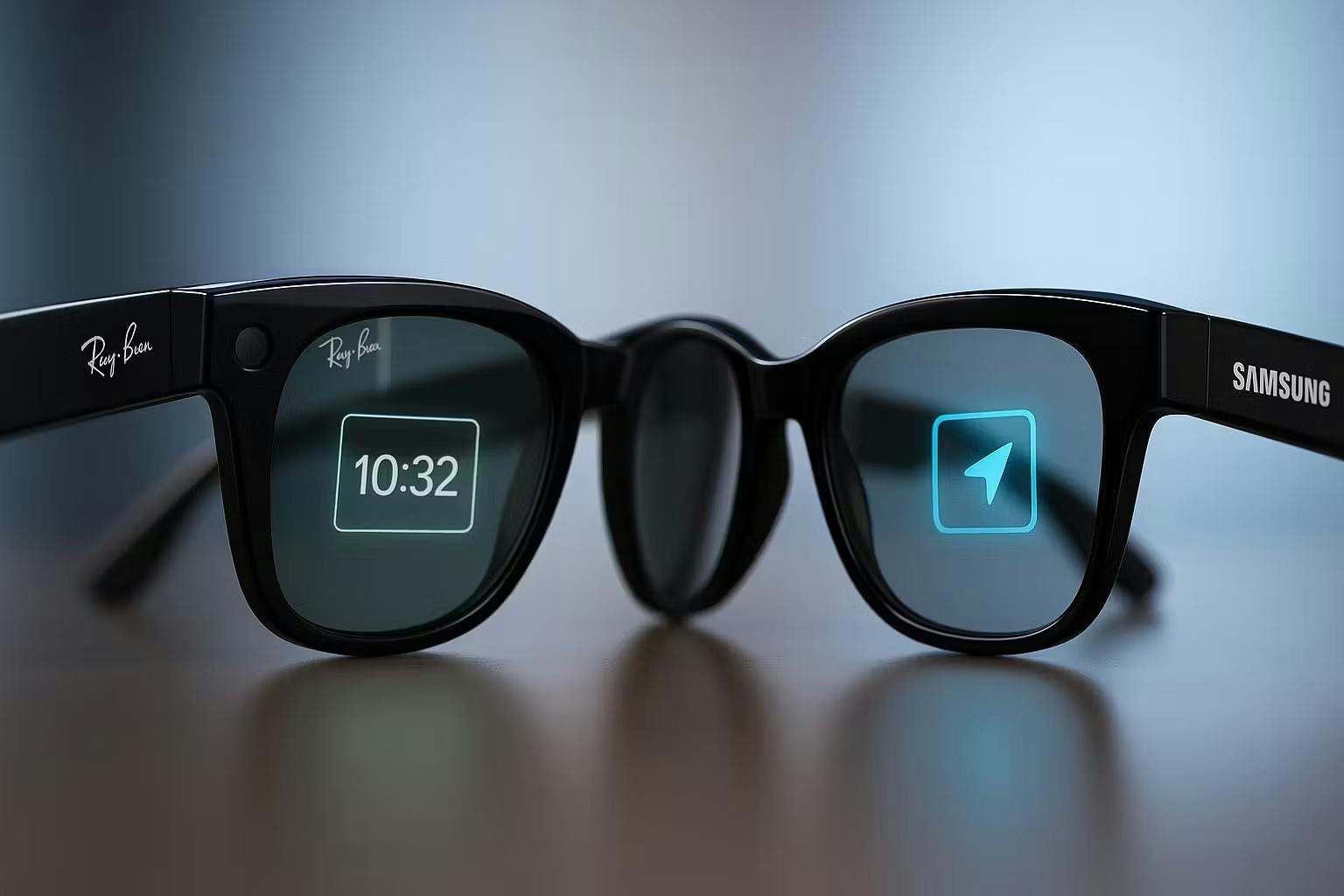If you’ve been watching the wearables space, you can feel it: smart glasses are finally getting interesting. Meta has momentum with its Ray-Ban line—hands-free cameras, on-device AI, and new “Display” models that tuck a tiny projector and waveguide into lenses. Samsung, meanwhile, is lining up an answer—not just with an Android-based XR headset, but with AI-forward glasses rumors that point straight at Meta’s turf. Put simply, the next big platform fight may sit on the bridge of your nose.
The Tech Meta Made Real—and Why It Matters
Meta’s latest Ray-Ban lineup blends practical hardware (open-ear audio, cameras, and touch/voice control) with Meta AI for real-time assistance—asking questions, translating, or capturing moments without lifting a phone. On the Display models, iFixit’s teardown shows the real engineering star is the lens stack: a reflective waveguide with a micro-projector that keeps images private to the wearer while avoiding the rainbow artifacts that plagued earlier AR attempts. It’s clever optics, but not cheap, and hardly serviceable—classic “first-wave” constraints you’d expect in a cutting-edge, small-run device.
Samsung’s Two-Track Play: XR Headset Now, AI Glasses Next
Samsung isn’t tip-toeing in. Its “Galaxy XR” headset—built with Google (Android XR) and Qualcomm—has leaked with 4K-class micro-OLED per eye, Snapdragon XR2+ Gen 2 silicon, eye/hand/voice tracking, and a One UI XR software layer. Think: full mixed reality compute on your head, with Gemini as the ambient assistant. Timing looks near-term (October 2025 is widely rumored), and the goal is clear: meet Apple Vision Pro and Meta Quest on performance and ecosystem, not just price.
But the real Meta face-off is glasses, not headsets. Multiple reports suggest Samsung is also preparing light, display-less AI glasses—camera, mics, speakers, and a cloud/phone-tethered assistant—essentially a Galaxy take on “everyday AI on your face.” If this lands, Samsung would flank Meta: heavy compute for immersive XR and featherweight AI eyewear for daily use. Exact dates wobble across sources (late 2025 into 2026 is rumored), but the direction is consistent.
How Competition Is Shaping the Stack
This rivalry is doing three useful things for the field:
For optics: Meta’s waveguide push forces everyone—Samsung included—to choose: go thin with in-lens display, or go lighter/cheaper with audio-first, display-less AI glasses and let the phone screen handle visuals. Expect Samsung to experiment on both ends because it controls phones, silicon partners, and displays.
For AI runtime: On-the-go assistants need low-latency wake words, robust speech pipelines, and quick camera → vision-model loops. Meta is leaning on LLAMA-family models and server offload; Samsung can lean on Gemini-integrated Android XR plus its own on-device NPU roadmaps in Galaxy phones. The shared theme: compress, cache, and pre-warm models so a whispered “what am I looking at?” responds in seconds, not spins.
For ecosystems: Glasses become better when they’re not a gadget but a node—messaging, photos, maps, and notes sync across phone and cloud. Meta is pulling you into its social graph; Samsung can piggyback on Android services (Maps, YouTube, Play) while seeding Galaxy-only perks. That tug-of-war should accelerate third-party app support and standards around camera privacy and safety.
Engineering the “AI on Your Face” Loop
From a builder’s view, the hard bits are predictable:
Sensors → models → actions: Always-listening microphones feed streaming ASR; camera frames hit a lightweight visual encoder; intent classification routes to on-device skills or cloud LLMs. You want a tiered planner: quick local tasks (capture, call, control playback), then escalate to cloud for open-ended queries.
Energy and thermals:
Duty-cycling the DSP/NPU, batching camera inference, and aggressive wake-word gating are table stakes. Headset-class XR uses external packs; AI glasses rely on sub-200 mW idle budgets.
Privacy UX:
A visible recording LED, “hold-to-record” defaults, and local redaction for faces/license plates build trust. Expect standardized “privacy beacons” in public spaces and OS-level policies for capture.
Optics trade-offs: Waveguides buy you glanceable UIs (navigation arrows, capture status), but they cost BOM and weight; audio-first glasses feel invisible but rely on your phone for visuals.
The Likely Near Future
Meta’s lead gives it mindshare and real-world telemetry; Samsung’s scale and Android XR partnership gives it distribution and developer gravity. If Samsung ships XR first and glasses next, we’ll see a split pattern: immersive work/play on the headset; ambient, assistant-driven utility on glasses. Either way, the phone remains the anchor—for compute, connectivity, and app identity.
And that’s the real shift:
your “primary computer” might still be the phone, but AI will move to your periphery—quietly listening, seeing, and helping—one quick glance or whisper at a time. The company that nails that invisible loop wins.


